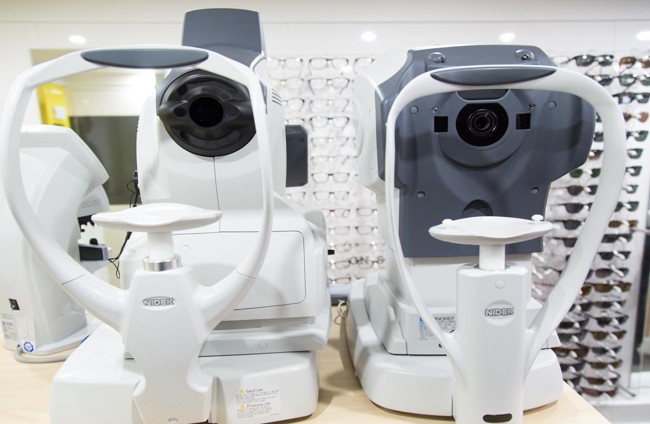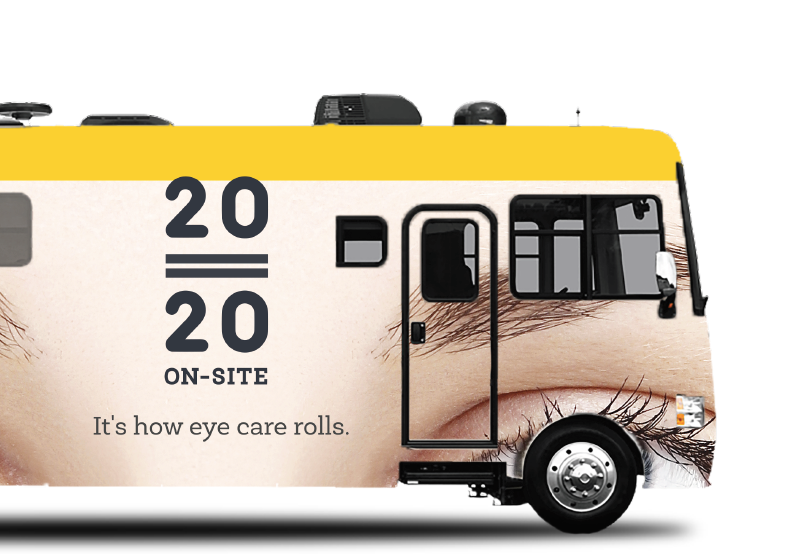Eye exams are important to your overall health and wellness, even when you have perfect vision. If you have any risk factors for diseases affecting the eyes, regular eye exams are even more critical. Examples of risk factors include the following:
- You or your family members have a history of eye disease. This includes conditions like age-related macular degeneration, glaucoma, and dry eye disease.
- You received a diagnosis of high blood pressure or diabetes
- You take medications that have eye or vision-related side effects
- Your work responsibilities rely heavily on your vision
- Your work exposes your eyes to tools, materials, or substances that are hazardous to your eyes
- You have had injuries to either or both of your eyes
- You have had surgery on either or both of your eyes

If your vision is generally good, it's tempting to skip your eye exam. After all, no one likes puff tests and eye dilation. Not to mention, a thorough check-up can be time-consuming. However, even if you can see well and you aren't at risk for eye disease, you should have a complete exam at least every two years. This gives your optometrist an opportunity to catch problems early – before they permanently affect your vision.
Recognizing that eye dilation can be a reason to avoid getting regular eye exams, we wanted to address all the questions you may have about dilation. So here goes.
What Is Eye Dilation?
There are four main features that make up the outer structure of each eye. The white part is the sclera, the clear part is the cornea, the colored ring is the iris, and the black circle in the center is the pupil. No doubt you have noticed that the pupils of your eyes get larger and smaller depending on the amount of light available. When you are in bright sunlight, your pupils are tiny black dots, but in a dark room, they are much larger.

Your corneas, pupils, crystalline lenses, optic nerves, and brain manage and interpret the light that enters your eyes. That's what makes it possible for you to see. The pupil works to regulate the amount of light going into your eyes. This not only allows more light to enter the eyes in the dark, allowing us to function at night, but also protects the structures inside of your eyes in bright sunlight.
The constant changes in the size of your pupils happen reflexively, like breathing. Normally, that's a good thing. If you had to consciously control the dilation of your pupils, you wouldn't have time to think about anything else. However, your optometrist needs your pupils to be fully dilated in order to view the inner workings of your eyes. Since you can't control the expansion and contraction of your pupils, a traditional eye exam typically includes medicated eye drops that open your pupils all the way.
Why Is Eye Dilation Part of Your Eye Exam?
Your optometrist performs a variety of tests as part of your comprehensive eye exam. For example, before eye dilation, they will assess your vision and measure for eyeglass prescriptions if needed. The optometrist will look at the outer structures of the eyes to make sure they are healthy, and they test to be sure your pupils respond appropriately to light. It's even possible to see part of your optic nerve without eye dilation. However, some structures stay hidden until the pupil opens completely.
Eye dilation allows your optometrist to get a better view of your optic nerve and macula, where vision-threatening diseases such as glaucoma, macular degeneration, and diabetic retinopathy occur, but also a view of the periphery of your retina, where holes and tears can occur. Glaucoma, macular degeneration, and diabetic retinopathy can lead to blindness if they are not diagnosed and treated early. Also, glaucoma has few, if any, symptoms you would notice until it is too late, and the only way to see early warning signs of either glaucoma, macular degeneration, and diabetes is through examination of the retina and optic nerve.
The good news is that new technology has reduced the need for frequent eye dilation for most patients. These digital tools make it possible to map the structure of the inside of your eyes in minute detail, thus removing the need for most patients needing eye dilation at every visit. However, some eye and systemic conditions require eye dilation on a more regular basis. Everyone should be dilated every few years, but your Optometrists will discuss with you if you are a patient who needs more frequent eye dilation.
What Happens Before, During, and After Eye Dilation?
When you choose a traditional exam with eye dilation, your optometrist puts a few drops in each of your eyes. This causes your pupils to open all the way. More importantly, your pupils stay open even if the light changes, so your doctor can complete the examination.
There are several types of medications used to dilate your pupils. Unfortunately, all of them tend to sting, but just for a few seconds. You may also notice your eyes tearing up, along with rapid blinking. Some Optometrists use numbing drops before instilling the dilation drops, which prevents most of that discomfort.
It takes between 20 and 30 minutes for your pupils to dilate fully. If you have light-colored eyes, like blue, green, and hazel, the medication works more quickly. While the medication is working, your pupils won't contract normally. That means you will experience blurred vision, especially when trying to see things close to you. Your eyes will struggle to change their focus between objects near and far away.
The biggest problem for most patients is light sensitivity. Since your pupils can't close to block out excess light, you may experience discomfort – particularly on a bright day. Wearing sunglasses, even indoors, can help until the effects of the medication wear off. Blurred vision and light sensitivity make driving unsafe, so it's best to have someone pick you up from your appointment.

Allergic reactions to eye dilation drops are uncommon, but they can happen. If you have an allergic reaction, your eyes and eyelids might become red. There could be itching and swelling. These symptoms are usually mild, and they go away quickly.
You can expect your pupils to be back to normal within a few hours. The exact amount of time is hard to pinpoint, because it depends on the type of medication used and how your eyes respond to it. If you don't notice improvement within six hours – and you aren't completely back to normal within 24 hours - let your optometrist know.
Is Eye Dilation Always Necessary In A Digital Eye Exam?
Advanced technology has created new options for keeping your eyes healthy, as well as being able to calculate how well you see, all digitally and without dilation. Cutting edge equipment maps the structure of your eyes, including the curvature of your cornea. From this data, the machine knows exactly how your eyes reflect light, which makes it possible to calculate how well you see.
This process only takes a minute to complete – and no drops are necessary. High Definition retinal imaging exams eliminate the need for eye dilation, because they automatically gather the same information that your Optometrist looks for during a dilation exam. As mentioned previously, this eliminates the need for most patients to be dilated on every visit, but some eye and systemic conditions require eye dilation on a more regular basis. While everyone should be dilated every few years, your Optometrist will discuss with you if you are one of those patients that needs more frequent eye dilation.
Most importantly, digital technology manages all of this information, so the system is capable of making recommendations for your corrective lens prescription. It also allows you the opportunity to review, in real-time, side-by-side comparisons of your current vision with the recommended corrective lenses. This simplifies your decision-making process, which saves you time and money.
Digital Eye Exams from 2020 On-site
2020 On-site brings eye care and eyewear to your workplace. Our mobile eye clinics come to you furnished with all of the same equipment you see in your Optometrist's office, so you can get a comprehensive eye exam without leaving your worksite.

We offer digital eye exams that include eye dilation, as well as fully digital eye exams – no dilation necessary. If you need corrective lenses, we provide the prescription and have more than 300 styles of frames in-stock.
If your company isn't a 2020 On-site client yet, don't worry. We are expanding all over the country. Let your HR department know that mobile eye care clinics are a convenient way to help employees stay healthy. If you live in Boston, Atlanta or Chicago, contact us - we’d love to work with your company to bring eye care and eyewear straight to your office door.


